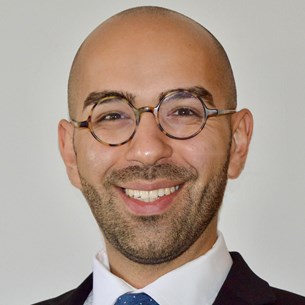Meeting
2023 ASCO Quality Care Symposium

Brigham and Women's Hospital, Boston, MA
Parsa Erfani, Michael Milligan, Gabriel A. Brooks, Stephen Matthew Schleicher, Miranda B. Lam
Background: From 2007 to 2017, oncology practices experienced high rates of consolidation. Greater market consolidation may facilitate greater efficiency but could also threaten access to care. Since 2017, the extent and effects of oncology consolidation have not been studied. Methods: Using Medicare data from 2015 to 2022, we calculated the number of medical oncologists (MOs) working in solo (1 MO), small (2-10 MOs), medium (11-24 MOs), and large (25+ MOs) practices. We estimated the level of MO consolidation in a Hospital Referral Region using the Herfindahl-Hirschman Index (HHI), a measure of consolidation ranging from 0 to 1 (with higher numbers corresponding to greater consolidation). We analyzed the distribution of MOs by measuring the association between the proportion of MOs practicing in a county and the county population. This association was quantified using the Gini coefficient, which ranges from 0 (equal distribution of MOs) to 1 (unequal distribution of MOs). We also created a multivariable linear regression model to assess the association of market factors with changes in HHI. Results: From 2015 to 2022, the number of MOs increased 14.5% (11,727 to 13,433), while the number of MO practices decreased 18.0% (2,774 to 2,276). During this period, the percentage of MOs working in solo or small practices decreased from 8.8% to 5.7% and 37.2% to 28.1%, respectively. The percentage working in large practices increased from 33.6% to 43.7%. The mean number of MOs per practice increased from 4.26 to 5.95 (p<0.001) and the median HHI increased from 0.3204 to 0.3480. The distribution of MOs did not change significantly at the county level: the Gini coefficient was 0.1288 in 2015 and 0.1254 in 2021 (p>0.05). In the multivariable analysis, regions with higher levels of baseline hospital consolidation (p<0.001), greater numbers of hospital beds per 1,000 persons (p=0.02), and lower levels of baseline MO practice consolidation (p<0.001) were associated with higher consolidation. Conclusions: Per HHI cutoffs of the Federal Trade Commission, the oncology market was highly consolidated in 2015 and underwent further consolidation by 2022. Despite rapid consolidation, the geographic distribution of MOs did not change substantially. Further research is needed to understand the impact of consolidation on cancer care access, quality, and cost.
| Market Factors | Change in HHI | p-value |
|---|---|---|
| Supply side | ||
| Baseline hospital consolidation | 0.3515 | <0.001 |
| Baseline MO practice consolidation | -0.4929 | <0.001 |
| Hospital Beds per 1,000 Persons | 0.0565 | 0.02 |
| Community level | ||
| Regional Population | <0.0001 | 0.69 |
| Medicare Population | <0.0001 | 0.98 |
| Median Income | 0.0002 | 0.87 |
| Proportion of White Population | -0.0009 | 0.51 |
| Physician level | ||
| Median Age of MOs | -0.0008 | 0.55 |
| Proportion of Male MOs | -0.0009 | 0.05 |
Disclaimer
This material on this page is ©2024 American Society of Clinical Oncology, all rights reserved. Licensing available upon request. For more information, please contact licensing@asco.org
2023 ASCO Quality Care Symposium
Poster Session
Poster Session A
Quality, Safety, and Implementation Science,Cost, Value, and Policy,Patient Experience,Survivorship
Organizational and Operational Issues
JCO Oncol Pract 19, 2023 (suppl 11; abstr 51)
10.1200/OP.2023.19.11_suppl.51
51
C4
Abstract Disclosures
2022 ASCO Annual Meeting
First Author: James Edward Bates
2022 ASCO Gastrointestinal Cancers Symposium
First Author: Ying Ling
2020 ASCO Quality Care Symposium
First Author: Avnish K Bhatia
2023 ASCO Quality Care Symposium
First Author: Bruno T Scodari